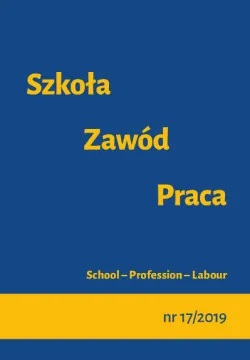Fizjonomika i grafologia w procesach rekrutacyjno-selekcyjnych. Perspektywa historyczna i współczesna
DOI:
https://doi.org/10.34767/SZP.2019.01.06Słowa kluczowe:
psychologia wyglądu, fizjonomika, grafologia, określanie charakteru przyszłego pracownika, efekt „pierwszego wrażenia”, proces natychmiastowego poznaniaAbstrakt
Artykuł przedstawia podejmowane w okresie międzywojennym próby określania przydatności kandydatów do danych zawodów na podstawie ich wyglądu i charakteru pisma, czy też statusu społecznego. W tym celu autorka wykorzystuje artykuły z prasy międzywojennej, tj. z „Ilustrowanego Kuryera Literacko-Naukowego”. W artykule przywołano wyniki analiz ówczesnych fizjognomików i grafologów dotyczące sposobów przewidywania charakteru pracownika na podstawie budowy ciała, wyglądu twarzy czy charakteru pisma. W związku z dużym znaczeniem, w obecnych czasach, efektu tzw. „pierwszego wrażenia”, autorka uważa, że informacje zawarte w artykule mogą być w pewnym stopniu inspirujące i przydatne nie tylko dla dzisiejszych rekruterów, ale i dla każdej osoby w różnych sytuacjach codziennego życia. W celu udowodnienia tego, nawiązuje do wyników badań, m.in. Malcolma Gladwella, autora bestselerowej książki pt. Błysk. Potęga przeczucia, który przekonuje czytelników o niekwestionowanym znaczeniu własnej intuicji w procesie tzw. „natychmiastowego poznania”.
Bibliografia
Banks M.S., Salapatek P., Infant visual perception, [w:] Handbook of child development, vol. 2, Infancy and development al psychobiology, New York 1983.
Bierach A.J., Sztuka czytania z twarzy, LUNA, Wrocław 1992.
Frenologia i fizjognomika zastosowana do życia i wychowania, „Kuryer Literacko-Naukowy”, Dodatek do nr 154 „Ilustrowanego Kuryera Codziennego” z dnia 6.06.1927.
Gawda B., Pismo a osobowość człowieka (grafologia), UMCS, Lublin 2000.
Gawda B., Pismo jako forma ekspresji i projekcji, Annales Universitatis Mariae Curie-Skłodowska Sectio K, XIII, 2000.
Gladwell M., Błysk. Potęga przeczucia, tłum. A. Skucińska, Znak, Kraków 2007.
Goc M., Programy komputerowe jako narzędzie wspomagające ekspertyzę pisma ręcznego, „Problemy Kryminalistyki” 2016, nr 294 (4).
Grafologia, „Kuryer Literacko-Naukowy”, Dodatek do nr 203 „Ilustrowanego Kuryera Co-dziennego” z 25.07.1927.
Górska Z., Psychometryczne właściwości analizy pisma ręcznego – przegląd badań, „Studia Psychologica” 2007, nr 7.
Logothetis N. K., Widzenie. Okno na świadomość, „Świat Nauki” 2003, nr 1, Wydanie specjalne. Tajemniczy umysł.
O kobietach pracujących w biurze, „Kuryer Literacko-Naukowy”, Dodatek do nr 126 „Ilustrowanego Kuryera Codziennego” z 9.05.1927.
Łuszczuk A., Łuszczuk K., Grafometria komputerowa, [w:] E. Gruza, M. Goc, T. Tomaszewski(red.), Co nowego w kryminalistyce – przegląd zagadnień z zakresu zwalczania przestępczości, UW, Warszawa 2010.

